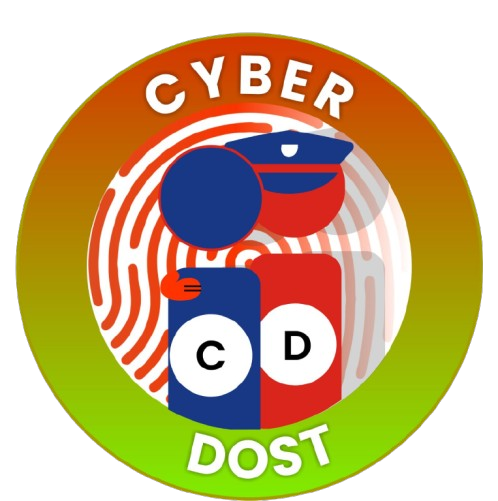फ़िल्टर
In Grid Connected Rooftop or small SPV Systems, the DC power generated from SPV panel is converted to AC power using Power Conditioning Unit (PCU) and it is fed to the Grid of 220kv/ 66kv/ 33kV/ 11kV three phase lines or of 440/ 220Volt three/ single phase line depending on the capacity of the system installed at institution/ commercial establishment or residential complex and the regulatory framework specified for respective states.
These SPV systems generate power during the day time which is utilized fully by powering captives loads and feed excess power to the grid as long as grid is available. In case, where solar power is not sufficient due to cloud cover etc. the captive loads are served by drawing power from the grid.
Such SPV systems can be installed at the rooftops of residential and commercial complex housing societies, community’s centres, Government organization private institution etc.
About 10-12 Sq.mt area is required to set up 1 KWp Grid Connected Rooftop Solar PV System.
- It brings down your electricity bill.
- You contribute immensely towards environmental protection.
- Consumer generates electricity according to his necessity.
- Surplus power can be supplied to the Grid.
- Reduction in electricity bill, as it is prepared after adjusting import and export of power.
- MNRE, GOI provides 30% subsidy on installation of Rooftop solar power plants in domestic sector and non- profit making institutions.
- Reduction in payback period after availing Generation Based Incentive (GBI).
In net-metering, the excess solar energy is exported to the grid. The same excess solar energy exported is deducted from the energy imported from the grid subject to certain conditions. The consumer pays for the net-energy imported from the grid.

Net Metering Diagram
In Group Net Metering arrangement, all energy produced by a collectively owned solar PV System is fed into the grid , then the solar energy as fed is credited on pro-data basis into the electricity bill of each participating consumer.
In Virtual Net Metering arrangement the surplus solar energy generated is exported to the grid from a solar Power Plant at the location of Solar Power Plant and can be adjusted in any other electricity service connection of the consumer in the area of the same Discoms.
Yes, a Net Metering Regulation for Renewable Energy 2014 is notified in Delhi by DERC. http://www.derc.gov.in/Regulations/DERCRegulations/Regulations%202014/Renewable%20Energy%20Net%20Metering%20Regulations%202014.pdf
- Generation Based Incentive (GBI)
- Exemlition on olien access as lirovided by DERC
- Exemlition on conversion charges for residential consumers
- Exemlition on wheeling charges, banking, cross subsidy and other charges for installing SliV liower lilants systems installed under Net Metering scheme.
- Excise Duty Exemlition as lirovided by Ministry of Finance, Govt. of India. for installing minimum 100 KWli Grid Connected Rooftoli SliV liower lilant.
- Accelerated Delireciation benefit and Tax Holiday
Yes, Central Financial Assistance (CFA) of 30 % of the bench mark cost or as applicable from time to time is provided for 1 KWp upto 500KWp Grid Connected Solar Power Plants to Residential Consumers (irrespective of the electricity connection) for installing Grid Connected Rooftop Solar PV Power Plants.
Yes, Central Financial Assistance (CFA) of 30 % of the bench mark cost or as applicable from time to time is provided for 1 KWp upto 500KWp Grid Connected Solar Power Plants to institutional(Hospitals ,Schools etc ) /Social Sector (irrespective of the electricity connection) for installing Grid Connected Rooftop Solar PV Power Plants.
No, Central Financial Assistance (CFA) is provided to Government buildings State, Central, local Government covering all buildings, PSUs, all buildings owned directly or indirectly, Government educational/Health institutions etc. for installing Grid Connected Rooftop Solar PV Power Plants.
However, MNRE provides an Achievement linked Incentives/ Award vide 03/88/2015-16/GCRT dated 04.05.2016 to Government buildings both State, Central ,local Government covering all buildings, PSUs, all buildings owned directly or indirectly, Government educational/Health institutions etc. for installing Grid Connected Rooftop Solar PV Power Plants.
http://mnre.gov.in/file-manager/UserFiles/gcrt-incentives-award-040516.pdf
No, neither any Central Financial Assistance (CFA) nor any Achievement linked Incentives/ Award is provided to Commercial and industrial establishment or to the private sector Consumers is provided by MNRE for installing Grid Connected Rooftop Solar PV Power Plants.
- A Minimum vacant roof area of 10 – 12 Sq. mtr or 100-120 Sq. Ft is required for installation of 1 kWli SliV system.
- The Consumer shall have 3 lihase/ 1 lihase sulilily service connection.
- Mandatory safety lirecautions/features shall be installed as lier the norms.
- A Single bi-directional meter shall be installed for exliort and imliort.
- The standard equiliment as lier the norms of MNRE shall only be installed
One can install Grid Connected Rooftop Solar PV Power Plants under Renewable Energy Service Company (RESCO) or CAPEX business Model.
When Renewable Energy Service Company (RESCO) or 3rd party implements the solar facility and provides services to the consumers is called RESCO or 3rd Party business model. The combinations could be:
Arrangement as a captive generating plant for the roof owners. The 3rd party implements the facility at the roof or within the premise of the consumers; the consumer may or may not invest as equity in the facility as mutually agreed between them. The power is then sold to the roof owner.
Solar Lease Model, Sale to Grid The 3rd party implementing the solar facility shall enter into a lease agreement with the consumer for medium to long term basis on rent. The facility is entirely owned by the 3rd party and consumer is not required to make any investment in facility. The power generated is fed into the grid and the roof top owner gets a rent.
When the Grid Connected Rooftop Solar PV Power Plants is built, owned and maintained by the consumer by investing upfront capital than the model is CAPEX business model installation of Grid Connected Rooftop Solar PV Power Plants.
For consumers that have adequate manpower/expertise for O&M, rooftop access concerns, availability of upfront funds, CAPEX model is better. Consumers in states that have net metering regulations can take benefit of the same in case they have substantial excess generation. On the other hand, consumers who prefer not to take responsibility for the system O&M, do not have rooftop security concerns and prefer to pay on a monthly basis rather than bulk upfront payment may choose to go for RESCO model.
One can install the Solar Rooftop Power plant from the firm/vendor empanelled with IPGCL.
The empanelment of vendors for installation of Solar PV Plants in the state of Delhi is in process. The process for availing Central Financial Assistance (CFA) of 30% shall be shared on the portal of EE & REM Centre, Department of Power, GNCTD soon after empanelment of vendors.


 ऊर्जा दक्षता एवं नवीकरणीय ऊर्जा प्रबंधन केंद्र
ऊर्जा दक्षता एवं नवीकरणीय ऊर्जा प्रबंधन केंद्र 


